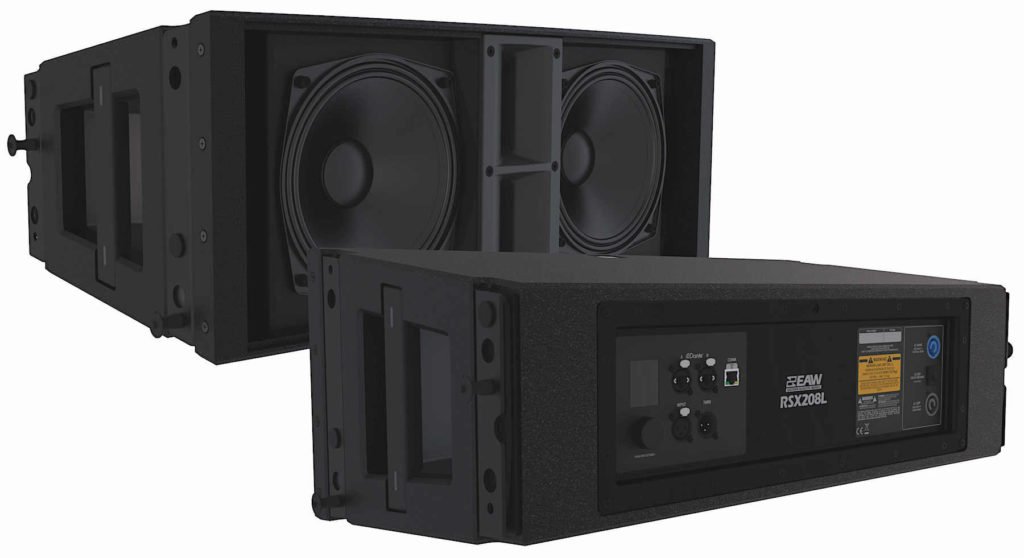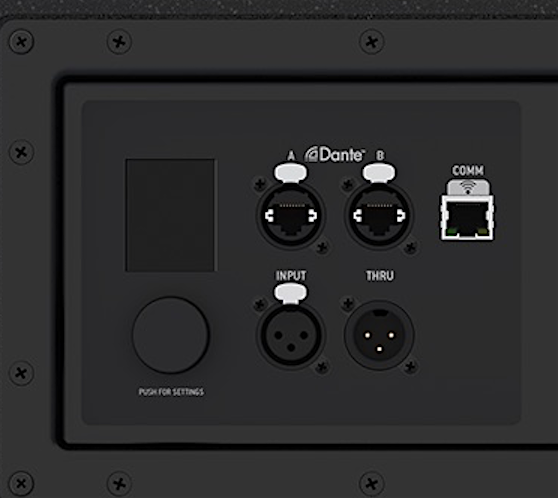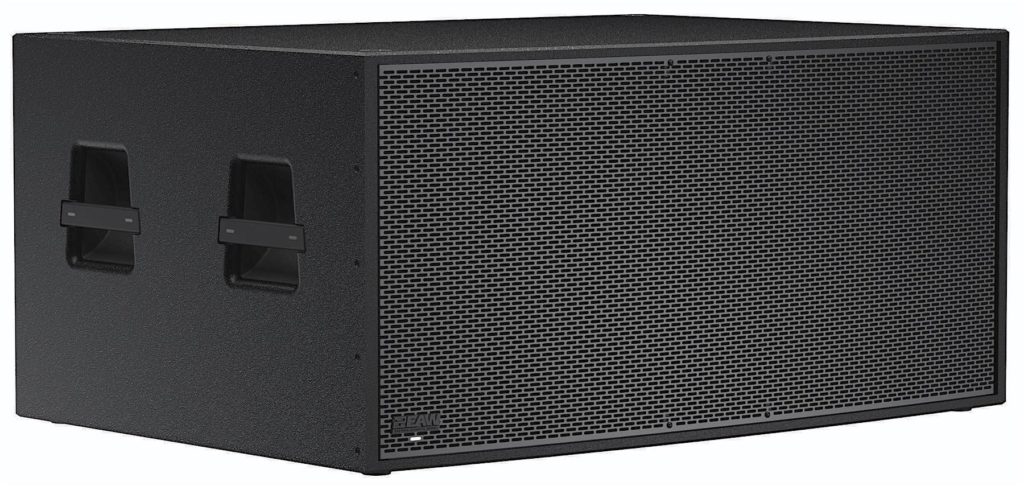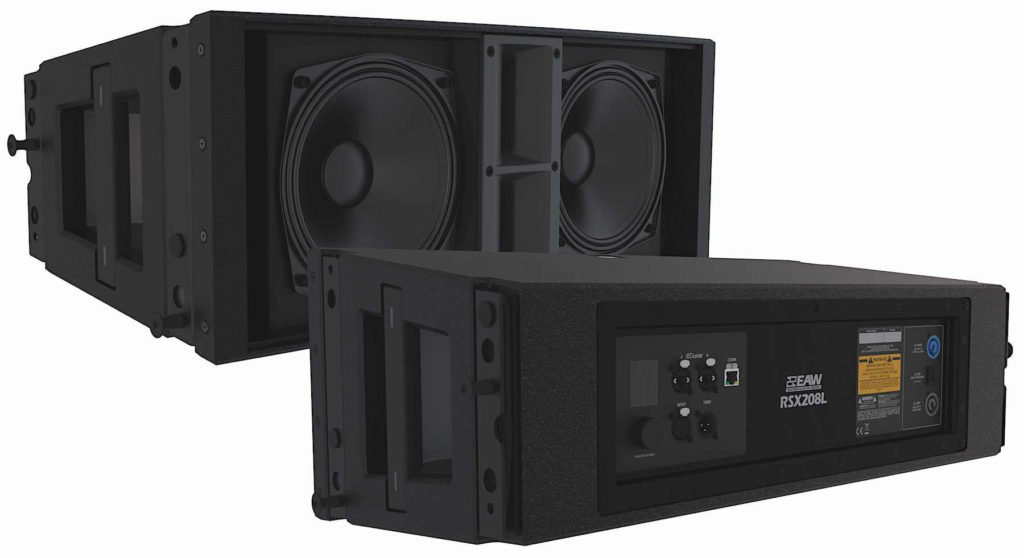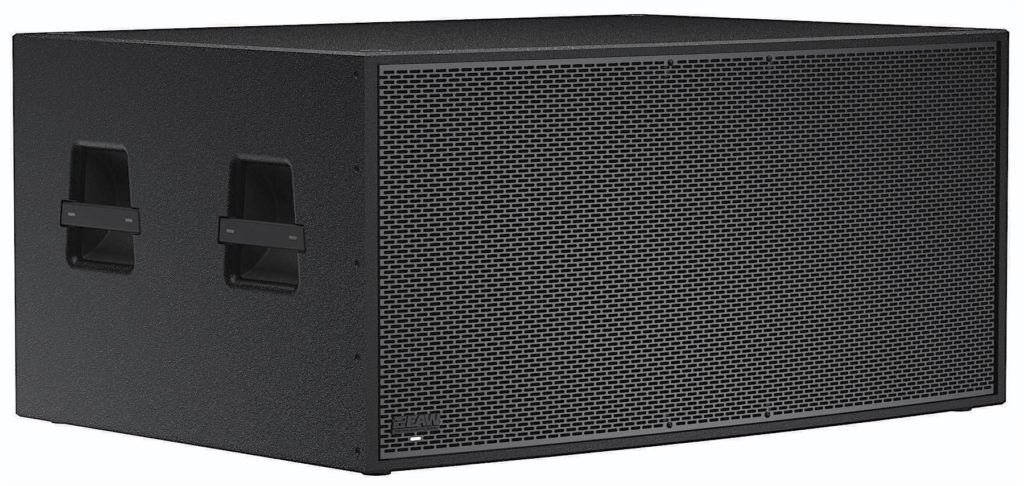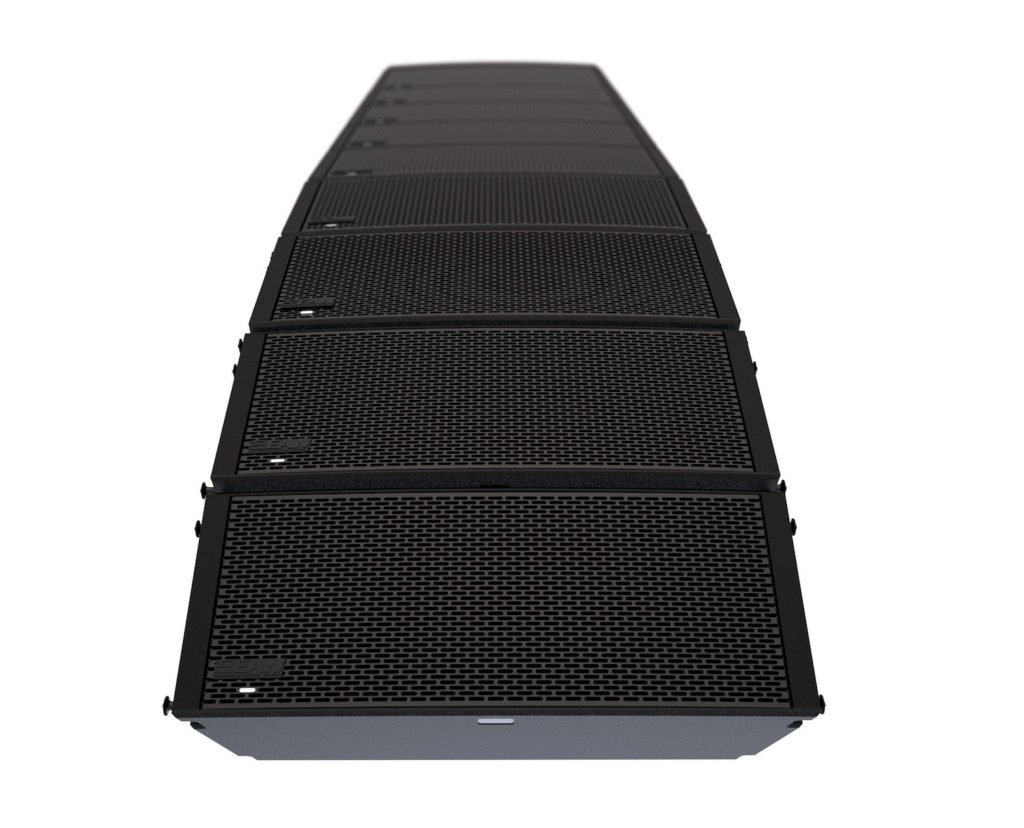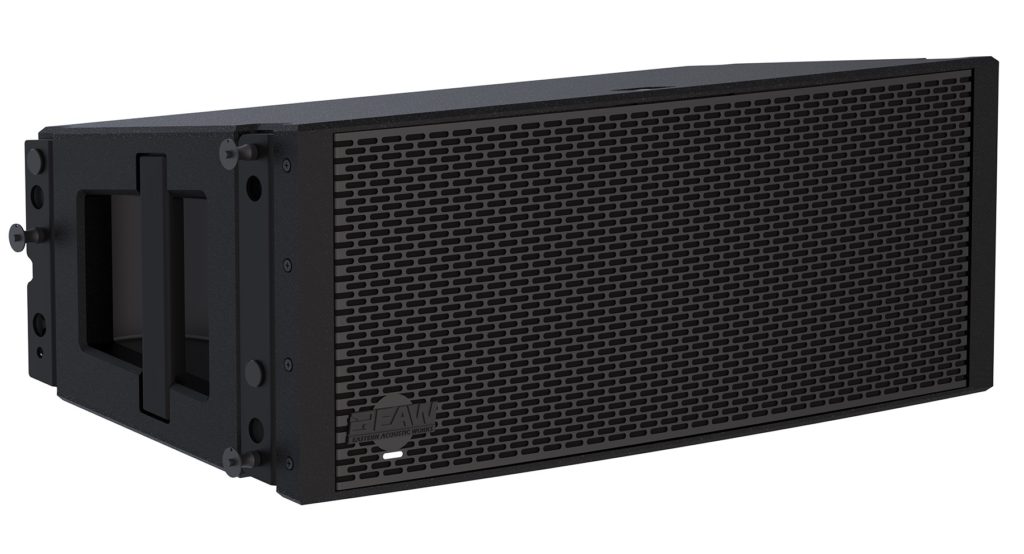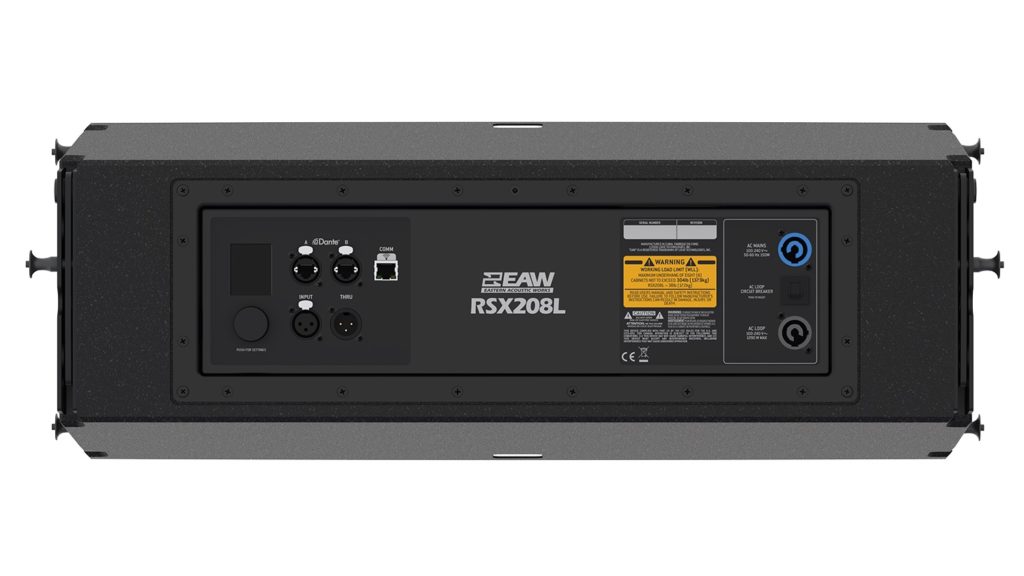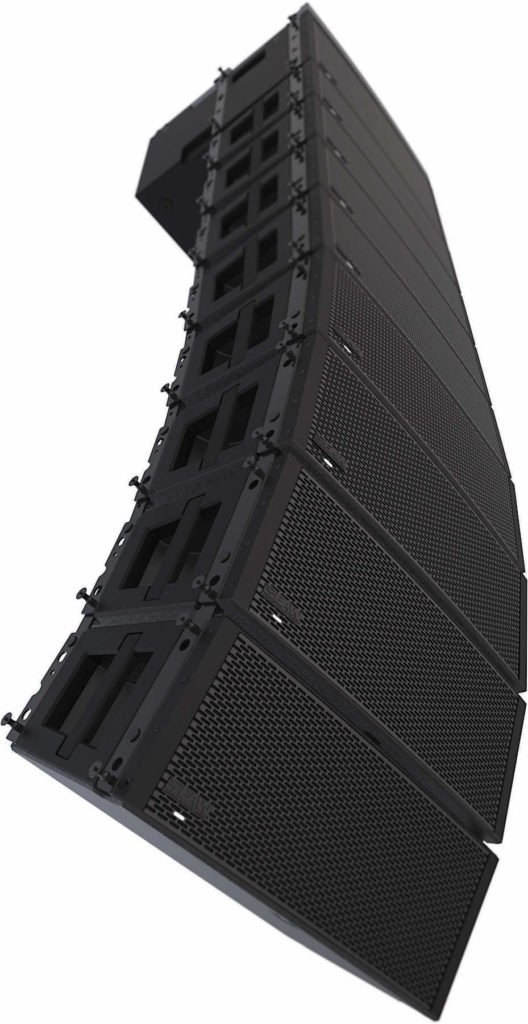News
10 Mar 2020
EAW Radius Series
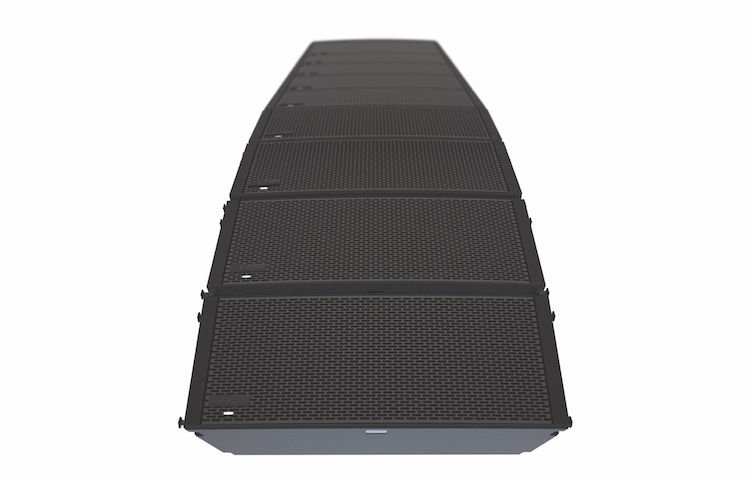
Subscribe to CX E-News
Richard Howey is the owner and operator of Audio Dynamite Limited, a professional sound, lighting and audio visual hire company servicing the South Island of New Zealand. In addition to production, Audio Dynamite also provide sales, design and installation of pro audio visual equipment in Timaru and Canterbury.
At Audio Dynamite, we were looking around for nearly four years for our next ideal PA system.
As a regional supplier in Timaru, on the South Island of New Zealand, we had some requirements that were important for our market. We wanted to expand our capability mainly in the theatre and corporate sectors as well as have the capacity to do larger gigs and develop into wider markets.
We needed good sound with wide coverage in a lightweight package. This was to be our first line array purchase and the EAW Radius series is what we decided to go with, particularly as it was affordable for use in our market.
I came across the Radius system at ENTECH, where I met Tim from PAVT. Tim followed up and invited us to a system demo in a Tauranga church with six boxes and three subs a side. We could see its potential!
We subsequently purchased eighteen RSX208L powered 3-way elements (with dual 8” drivers), and six RSX218 dual 18” subs. Eighteen RSX208Ls meant we can either do two hangs of nine elements or three hangs of six elements for Left, Centre, Right on theatre gigs.
In our local venues, we have limited opportunities to fly speakers, and where we can, the weight ratings are low. The RSX208Ls are only 18kgs each so with flyware, a hang of six is only about 140kgs. This really works for us.
A couple of our key venues are very wide, so horizontal coverage was important. The RSX208L beamwidth is 120° and we’ve found them to be very smooth across that range, offering less high frequency roll off at the extremes compared to other similar spec arrays.
Every box has its own digital signal processing built in, and the boxes know their tilt and configuration within the array by way of their onboard infrared transceivers and inclinometers.
This makes building an array a dream when using EAW’s iPad App, Mosaic.
The array processing is automatically configured to account for the quantity of boxes in the array and the speaker angles within the array that are read from the sensors.
Called Optilogic, it takes the size of the array into account, the entered height as well as the required throw, and adjusts for low frequency coupling as well as high frequency shading.
So in a long throw situation, the top long throw boxes in the array have more high frequency output whereas the lower short throw boxes will have less.
A lot of the technology in the Radius series has been taken from EAW’s large format line arrays Anya and Anna (and Otto subs). However, Radius is not an adaptive array where all elements are hung in a vertical array like its bigger siblings. It is a traditional variable J shape system.
We needed good sound with wide coverage in a lightweight package. This was to be our first line array purchase and the EAW Radius series is what we decided to go with, particularly as it was affordable for use in our market
The Radius boxes have integrated Dante networking bi-directional inputs complete with a switched output where up to ten boxes can be daisy chained as well as an analogue failover.
When we tested the failover, we could detect the changeover as it occurred because of a barely audible gap; the sort of thing we notice but the punters probably wouldn’t. There was a slightly longer and staggered gap when re-establishing the Dante.
As well as the Dante ports, the RSX208L have another network port with the Dante traffic filtered out. This is where you connect a WiFi router to configure and monitor the system on an iPad using EAW’s Mosaic app.
Mosaic has been designed for simple setup designs, but mainly efficient control and monitoring of the system. For prediction though, it is a bit basic unless you are in a simple venue.
When I do prediction work, I use EAW’s fully featured desktop software, Resolution.
The boxes do have a simple LCD screen and rotary controller for accessing the settings on the box itself, but I seldom use it, as in Mosaic you have everything you need laid out in a decent touchscreen interface.
I enter a few parameters, minimum and maximum audience distances, and array height, then Mosaic initiates the optimisation sequence.
Using the integrated infrared transceivers and tilt sensors, the position and splay angle of each RSX element within the array is automatically detected.
The modules are grouped accordingly, and the system’s acoustical output is optimised to compensate for array size, audience geometry and throw distance. Apparently array optimisation can be done without a network or software application using the back panel on the boxes, but I have never needed to.
One slight concern is that the menu system on the boxes don’t have a lockout function. If we do a cardioid sub array using the RSX218s, the out of phase boxes are facing the punters and they can access the menu system on the box. A user interface lockout would be nice.
The system has four pre-defined voicings. We run the ‘Sapphire’ setting. It has a bit of top end boost, some low mid or bass lift, and that is it! Most engineers are happy with this as they were doing those settings in EQ anyway.
We’ve found only minimal EQ is required. Sonically it is a really smooth system and I haven’t noticed any issues with gain before feedback when we have microphones out front.
An especially useful feature is the built-in output check and driver test. The system pumps white noise through every driver, one after the other. You can do a complete driver test in the whole rig really quickly.
The rigging is not the most innovative, but it is simple, easy, and light. With ground stacking we’ve found that we cannot always get the angles we want, and the array processing is limited to five elements in ground stack mode.
Therefore, we are in the process of building some ground supported flying adaptors so we can ground stack ‘fly’ them, the right way up (as if they were flying).
That way the rain guards work, we shift the weight back, we can have six elements, and we can achieve the splay angles that we want for our theatre gigs where we cannot fly the boxes due to poor rigging options.
Sonically it has taken our business to the next level where we compete favourably for bigger and better gigs
The RSX218 Subs sound great. We built our own dollies and we are probably going to put wheels on the back of them and use them with other top boxes.
One slightly frustrating thing about the RSX218 subs (other than no lockout on the DSP panel) is that they are a curved front. Therefore, they don’t stack that well in vehicle transit. It would be easier to put a flat cover on them if they were flat, but overall they are a great box.
We are really pleased with our Radius System. It is affordable, lightweight, easy to setup and the flexible dispersion works really well for our market. Sonically it has taken our business to the next level where we compete favourably for bigger and better gigs.
The Specs
RSX208L 3-WAY SELF-POWERED LOUDSPEAKER 120° × 12°
Operating Range: 70 Hz to 18 kHz
Calculated Maximum Output Peak: 128 dB LF, MF, HF
Amplifier Power: 3x 500W
Weight: 18.4 kg
Dimensions: 24.9 cm x 68.3 cm x 33.2 cm
RSX 218 DUAL 18 INCH SELF-POWERED SUBWOOFER
Operating Range: 27 Hz to 125 Hz
Calculated Maximum Output Peak: 135 dB (whole space), 141 dB (half space)
Nominal Coverage: 360° Horizontal and Vertical
Weight: 69.4 kg
Dimensions: 79.1 cm x 52.3 cm x 111.8 cm
Product Info: www.eaw.com/products-series/radius-series
Distributor, Australia and New Zealand: www.pavt.com.au
CX Magazine – March 2020
LIGHTING | AUDIO | VIDEO | STAGING | INTEGRATION
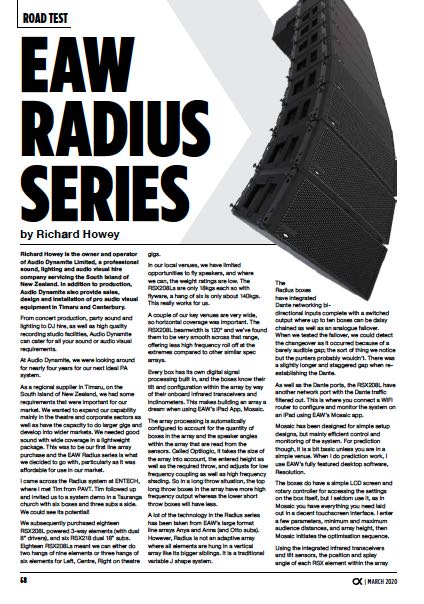
Entertainment technology news and issues for Australia and New Zealand
– in print and free online www.cxnetwork.com.au
© VCS Creative Publishing
Subscribe
Published monthly since 1991, our famous AV industry magazine is free for download or pay for print. Subscribers also receive CX News, our free weekly email with the latest industry news and jobs.

